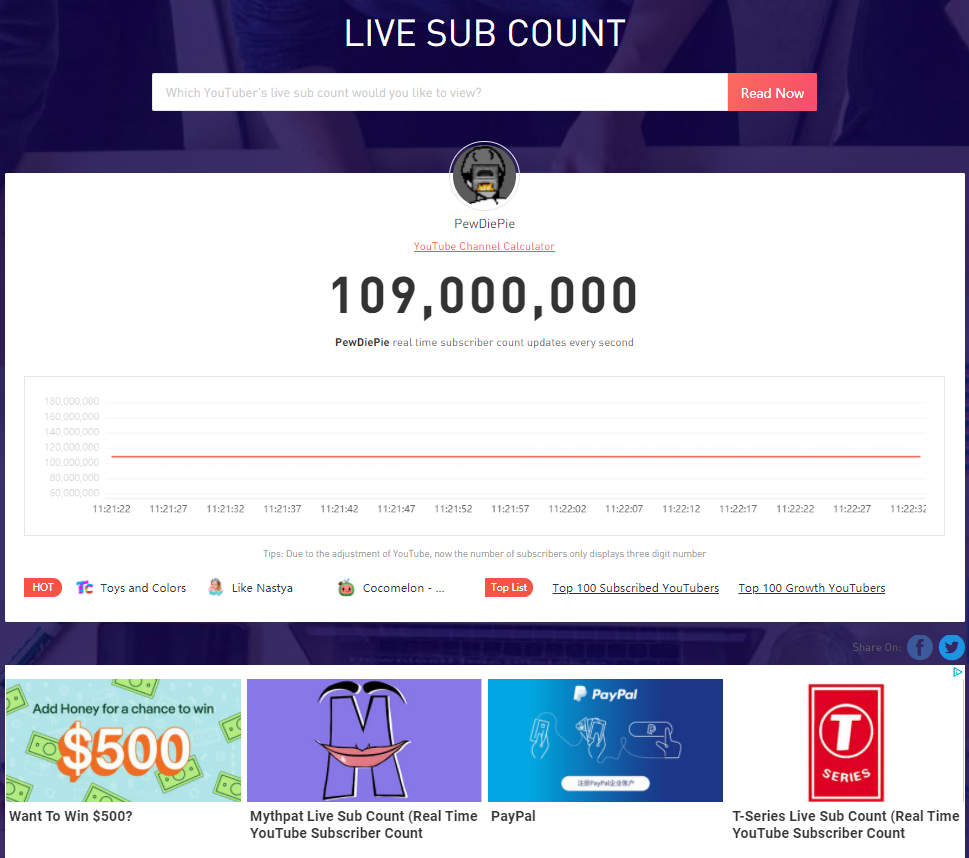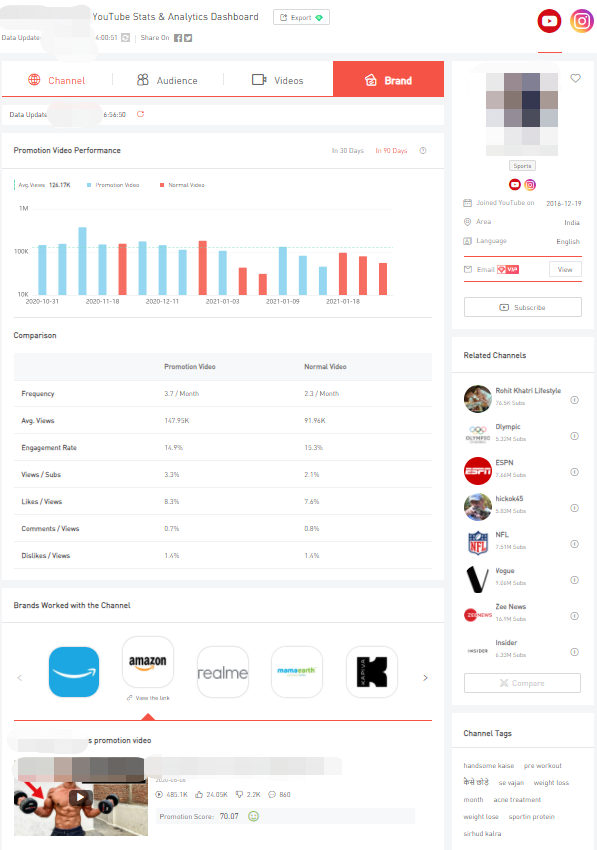Marketing Fraud and Transparency: Risks You Should Avoid in Influencer Collaboration

Influencer marketing through social media has forged a mainstream in digital marketing. But marketing fraud and lack of transparency also cause a huge loss for marketers during collaborating with influencers.
Compared with traditional advertising strategies, influencer marketing through working with YouTubers and Instagrammers has been proved as a more efficient and performance-traceable way, no matter through direct contact or influencer marketing platforms and agencies. Vigorously-developing influencer marketing platform marketplace and numerous successful cases attract brands to flock into. Solid trust between influencers and followers is seen as the best weapon for marketers to leverage to do marketing.
According to a survey by Influencer Marketing Hub, by 2017, surveyed brands or marketers earned a return of $7.65 for every dollar they spent on influencer marketing. However, it’s worth noticing that only the top 15% of them earned over $20 for every influencer dollar spent, and there are 25% either lost money or just broke even. The reasons for losing money included but were not limited to picking poor influencers with fake followings, and failure to comply with related regulatory rules for influencer marketing.
Influencer Marketing: A West Wild full of Risk
We can’t deny the fact that influencer marketing is still a wild west without mature market regulatory laws used to standardize marketing behaviors exercised by influencers, marketers or brands, and influencer marketing platforms. It’s still a gray area existing various risks. Brands and marketers should scrupulously work with YouTubers or Instagrammers to plan an influencer marketing campaign. Influencer marketing platforms or agencies have to try as much as they can to provide complete marketing services and technology tools to help brands avoid risks in influencer marketing.
In influencer marketing, what kind of pitfalls we should watch out for? What are typical potential risks which are easily confronted by brands?
NoxInfluencer is going to bring you to check typical influencer fraud and transparency issues in influencers’ marketing behavior.
Influencer Fraud: Fake Followings
In the early stage of influencer marketing, the subscriber count of YouTubers had been a measurement for brands to evaluate their marketing value. Marketers mistakenly held that a larger following means better marketing performance. Therefore, a large chunk of influencers started to refuse to play by the book in order to make a quick buck. They tried to take a shortcut to their success and pay to buy followers, as a way to demonstrate their popularity, thus getting deals from brands more easily.

According to a study by independent campaign measurement firm CampaignDeus, it was found that 12% of UK influencers bought fake Instagram followers in the first six months of 2018.
With respect to the fabricated following, sometimes these are real accounts and other times are bots, also called zombie followers. No matter how they are created, the fake followings will not generate engagement or interactions under YouTuber videos or Instagram posts. YouTube videos without engagement have no value in marketing.
So, marketing professionals and influencer marketing analytic platforms have realized that simply taking followers counts as the standard of whether to make a deal is not enough. NoxInfluencer, as a world-leading influencer analytic platform, helps brands and marketers to evaluate influencers more seriously, with more metrics to do so. Influencers should aware that they can’t tout their follower count anymore to get marketing deals.
Moving beyond the days of simply picking popular YouTubers or Instagrammers as brand ambassadors, influencer marketing platforms and agencies are now considering a variety of metrics, ranging from the level of effort put into content creation, and historical content quality as well as more performance-based metrics like engagement rates and the number of sales driven, to hash out payment rates.

However, regardless of follower count or engagement rate, they are just used to decide whether to work with certain influencers. The ultimate goal of brands is to leverage influencers to do marketing. Is not the sponsorship history of influencers more useful for brands’ consideration?
Brands promotion analysis over YouTube channel, a hard-to-track data for brands, is exactly one of the key functions of NoxInfluencer, helping brands to know YouTubers’ historical promotion experience. When you know a YouTuber’s record of brand promotion, fake following, which requires plenty of time to verify, is not a necessary factor to consider anymore.

And good news, NoxInfluencer is going to launch a function of brand search to help marketers to find how many YouTubers have done marketing promotions for a certain brand or brand category.

Keep Your Influencer Marketing Transparent
As we said in the previous article, influencer marketing is still a wild west without mature and effective codes to standardize marketing behaviors between brands and influencers. We all know marketing is essentially a kind of economic behavior, which is required supervision by regulators in principle. It is inevitable to see many economic transactions involved in influencer marketing, labor rewards, tax issues, ethicality related to consumer protection, etc. One of these issues, hidden marketing, is a serious problem considered as a breach of consumer protection.
In 2019, Federal Trade Commission (FTC) launched Disclosure 101 for Social Media Influencers to secure consumers’ rights when reached by influencer marketing. It requires influencers to disclose their advertisement in their content, keeping their influencer marketing activities transparent enough to a massive audience. Besides, FTC has made it clear in Endorsement Guides that any “material” implication between endorsers and advertisers, influencers in our case, should be clearly disclosed. This material consideration could either be monetary in nature, or in kind.
Why Hidden Marketing Unallowable and Why Transparency Matters
Consumer Protection
Aiming to protect consumers in influencer marketing campaigns, influencers should make the sponsored content distinguished from other naturally-created content. All promotion content must be identifiable to followers.
For instance, in most countries, Instagrammers are required to add a “#ad” in the caption of a promotion post. Brands need to know their affiliation with influencers should adhere to these rules. As we can see on YouTube, viewers would be reminded that they are watching a video including promotional content, a measure to protect consumers.
Maintaining Nice Relationship Among Consumers, Influencers, and Brands
Solid trust between influencers and followers is seen as the best weapon for marketers to leverage to do marketing. When this trusted relationship is damaged, marketing by influencers won’t work. Nevertheless, sometimes influencer marketing itself would damage this relationship, like hidden marketing by influencers.
Influencers must make it clear to the audience that they are doing advertising. They shouldn’t make their sponsored content like their personal recommendation and a naturally-created post. Otherwise, they are lying to audience.
When content creators, like YouTubers and Instagrammers, hide their marketing behaviors from their subscribers and don’t manage to disclose that their content is sponsored with an aim of business promotion, they are breaching consumer protection laws. Transparent cooperation relationship between influencers and brands will make them more honest, maintaining authenticity. Hidden marketing will make both brands and influencers will suffer from the backlash from the public.
Tax Issues in Influencers Marketing
A disclosure that influencers are getting paid can ensure that their rewards are taxed. Promotion-labeled content shows the transactions involved will comply with related tax laws.
By launching cooperation with influencers on NoxInfluencer, all procedures are completed online, including contract signing and promotion fee payment. All tax items will be displayed in the system to secure every step of transaction to be legitimate.
Conclusion
There is always a necessity to use a great influencer platform or cooperating with agencies to avoid influencer fraud. And it’s the responsibility of both brands and influencers to comply with related laws, like keeping influencer marketing campaigns transparent. It’s highly advisable for brands to monitoring influencers’ marketing on platforms.
